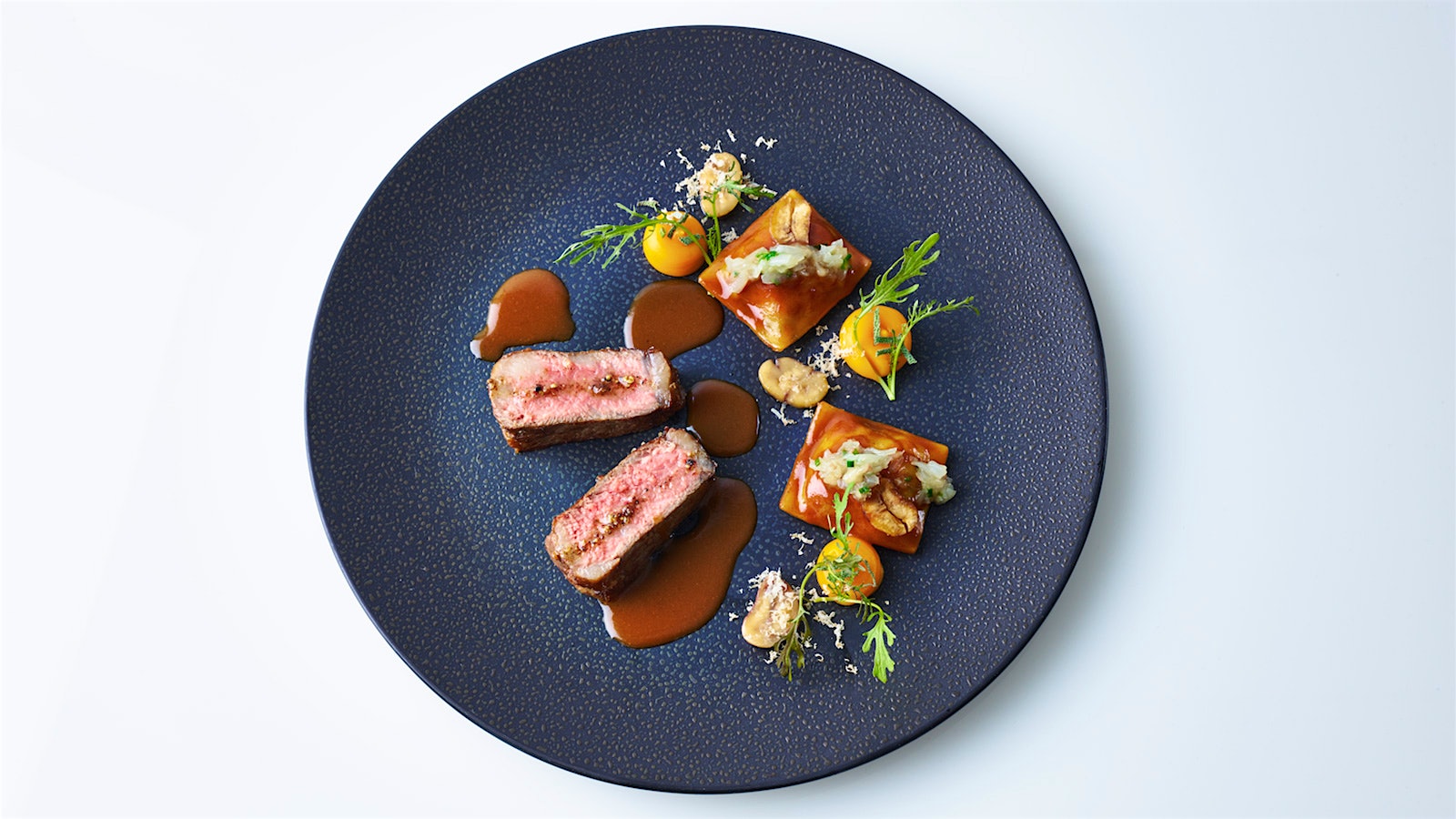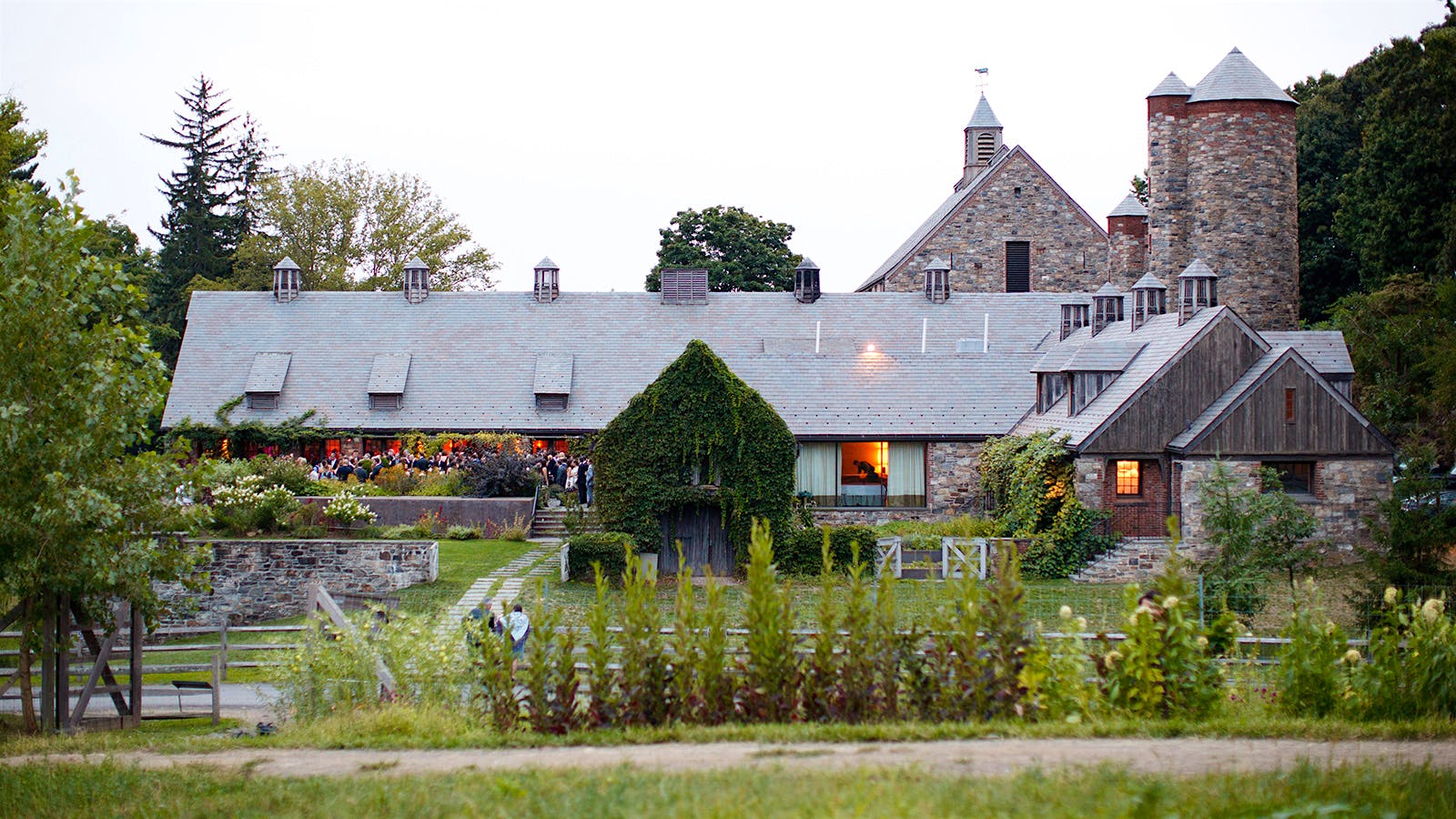Products You May Like
After more than a year and a half, Blue Hill at Stone Barns, the Wine Spectator Grand Award winner in Pocantico Hills, N.Y., will resume service Oct. 7. The news comes at the end of the six-month chefs-in-residence program showcasing everything from upscale Chilean cuisine to more casual menus with barbecue and wood-fired pizza.
The team describes this opening as Blue Hill 2.0, meaning the restaurant won’t be the exact same concept as it was pre-pandemic. “Cooking and farming became more interesting, and more complicated,” chef-owner Dan Barber said in a statement shared on Instagram. “It changed the way our team thinks about food and focused our thinking about Blue Hill restaurant and the culture we want to create.”
The operation will take a larger focus on education, dedicating an estimated 25 percent of its efforts to workshops, teaching, learning and researching. The wine side of the restaurant is expected to follow the same route.
Wine director Hannah Williams is looking forward to the return of a physical wine list, rather than the QR code that was given to guests during the pandemic to minimize contact. This inspired her to lean even further into the tangible aspect and publish a book featuring the wine selections, titled This Is Not a Wine List.
“Blue Hill, the experience, it’s so narrative based. Everything is a story about a seed breeder, or a farmer or a fisherman or woman,” Williams told Wine Spectator. “Why should wine be any different in this context?”
In addition to showcasing the 2,300-plus selection wine list, the book shares a collection of images from the wine team’s travels to different wine regions, pages on featured producers and pictures and ephemera shared by winemakers themselves. “It really feels like a part of us and it tells a story of the wine much more than your average list would,” Williams said.
While Williams and her team have been adjusting the wine selections to complement the various chef residencies, they’ve also been bolstering the reserve lists. “What I’m really proud of … is that we’re always buying wine ahead of time, sometimes five years before we put it on the list. So we had a lot of wine that was tucked away,” she said. Among those reserve wines are large collections of Burgundy, Bordeaux and Napa as well as less common strengths like aged Rieslings.
Though the team is now focused on the reopening, the residence program will return in some form in 2022. “That was Blue Hill’s attempt to make the dining experiences here varied and available more to the community, rather than just having really hard-to-come-by reservations at a higher price point,” Williams said. In the meantime, reservations at the restaurant will be reduced to four days a week for dinner, with earlier seatings available on Sundays.—Taylor McBride
New York’s Daniel Reopens with New Chef and Reimagined Space

New York Grand Award winner Daniel reopened late last month with a new executive chef, Eddy Leroux, and a redesigned dining room. “The entire team at Daniel and I are thrilled to start a new chapter after this very long year of challenges and pivotal changes,” chef-owner Daniel Boulud said in a statement. “We are eager to present a fresh, delectable experience in our artistic setting and warm ambiance.”
Leroux has been a member of the Daniel team for nearly 20 years, most recently as the restaurant’s chef de cuisine. His prix-fixe menu continues to spotlight French cuisine while incorporating some modern touches and drawing inspiration from an international array of meats, produce and foraged ingredients. This includes dishes like Long Island duck with Concord grapes, Scottish langoustine with matsutake mushrooms, Bolivian dark chocolate with Cognac foam and more to pair with Dinex Group wine director Daniel Johnnes’ 2,100-label list. “From years of working with chef Daniel, I know well how he constantly gives his team both the opportunity and the challenge to raise the standards of excellence,” Leroux said in a statement.
Leroux isn’t the only member of Boulud’s team stepping into a new role. Previously the pastry chef at the currently closed Café Boulud in New York, Shaun Velez is Daniel’s new executive pastry chef.
Along with these staffing changes, Daniel’s 3,000-square-foot dining room was redesigned by New York–based firm Tihany Design with a stainless-steel arch entrance, a coffered ceiling and an adjusted floorplan lined by wooden dividers. The space features a new Art Deco–style bar, as well, with crystal features designed by French glassmaker Lalique. “Our new design is a fresh take on chef Daniel’s brand of hospitality, celebrating the evolution of his culinary art,” said Tihany Design managing partner Alessia Genova in a statement. “The dialogue between the Neo-Classical architecture and the 21st-century design elements give a modern and exciting feel to the restaurant.”
The space also showcases a new art program overseen by art advisor Janis Gardner Cecil. On display throughout the restaurant, these exhibitions change biannually and highlight well-known artists like painter Alex Katz and photographer Robert Mapplethorpe, who are the first to be featured.
The reopening follows the debut of Boulud’s Le Pavillon farther downtown and joins the Dinex Group’s stacked portfolio including Restaurant Award winning–outposts of Café Boulud in Toronto and Palm Beach, Fla.—Collin Dreizen
Michael Mina Brings Greek Concept to Iconic San Francisco Location

Called Estiatorio Ornos a Michael Mina Restaurant, chef Michael Mina’s latest venture is now open in San Francisco. The Greek restaurant takes over the space that previously held his eponymous Grand Award winner, which announced its permanent closure in August. Before that, it held another major Mina restaurant, Aqua, which opened in the 1990s. “I am grateful for this opportunity to breathe new life not only into a place that’s so special to me, but into the legendary San Francisco restaurant community that I have had the pleasure to be a part of for the past two decades,” chef Mina said in a statement shared with Wine Spectator.
This is the second location for Estiatorio Ornos, and like the one in Miami that debuted last fall, it’s a partnership between Mina Group and chefs Girair “Jerry” Goumroian and Nikolaos Georgousis. The renovated space captures the feel of the Greek coast, with bright-white walls and pops of vibrant colors.
The dishes are distinctly Greek but feature Mina’s signature refined flair, such as caviar service with warm pita and zucchini chips, sea urchin with lemon, chives and Aleppo pepper and phyllo-crusted Dover sole. Tableside offerings are a significant part of service, including a cart of traditional dips like tzatziki and hummus, a fish cart presenting fish that’s been delivered overnight from the Aegean Sea as well as local options, and a pastry cart.
Corporate wine director Jeremy Shanker is overseeing the wine list, which covers more than 1,800 selections, backed by an inventory of 5,200-plus bottles. The program builds on the already robust wine collection that’s been kept and maintained in the space, even as other restaurants liquidated inventory during the pandemic.
While Shanker is naturally highlighting Greek wines, his goal is to offer a global program that has something for everyone, with labels that are benchmarks of their respective regions. To that end, the list is divided into three sections comprising Mediterranean, Northern Continental Europe and New World wines. He notes that there are always exceptions, but “in general, the best wines for this menu tend to be slightly lower in alcohol, with freshness and aromatic intensity, rather than wines dominated by richness and new oak.”
Depth has been another important factor in Shanker’s development of the list. There are substantial verticals and horizontals, often with hard-to-find bottlings. “We have multiple Miani and Pierre Gonon vintages, Chateau Musar going back to 1966, as well as some other head-turning bottles like 1949 Château Latour, 1973 Dom Ruinart and 1935 Simi Cabernet, to name just a few.” At the same time, he stresses that guests can have just as memorable of a wine experience by diving into their numerous exciting wines in the $100 range, such as Greece’s 2016 Karydas Naoussa Xinomavro and Sigalas Assyrtiko Santorini.
In addition to the à-la-carte menu, there’s a four-course tasting menu with options for each course that starts at $105 per person. Two pairings are available to match with the tasting menu: One exclusively features Greek wines, while the reserve pairing features Greek wines alongside highly allocated and rare picks from around the world. Eighteen wines are available by the glass, about half of which are Greek.
Shanker already plans to increase the number of bottle selections to more than 2,000 by the end of the year, expanding regions like Bordeaux, Burgundy and Piedmont, and finding older vintages of Greek wines, which he notes is no easy feat.
“There is a long lineage of incredible talent who worked as sommeliers in the space,” said Shanker, citing names from Rajat Parr to Catherine Fallis to Mina himself. “I’m confident that the current team will continue the great legacy, push the boundaries, grow the wine program, and offer a truly unique experience.”—Julie Harans
Keep up with the latest restaurant news from our award winners: Subscribe to our free Private Guide to Dining newsletter, and follow us on Twitter at @WSRestoAwards and on Instagram at @wsrestaurantawards.
